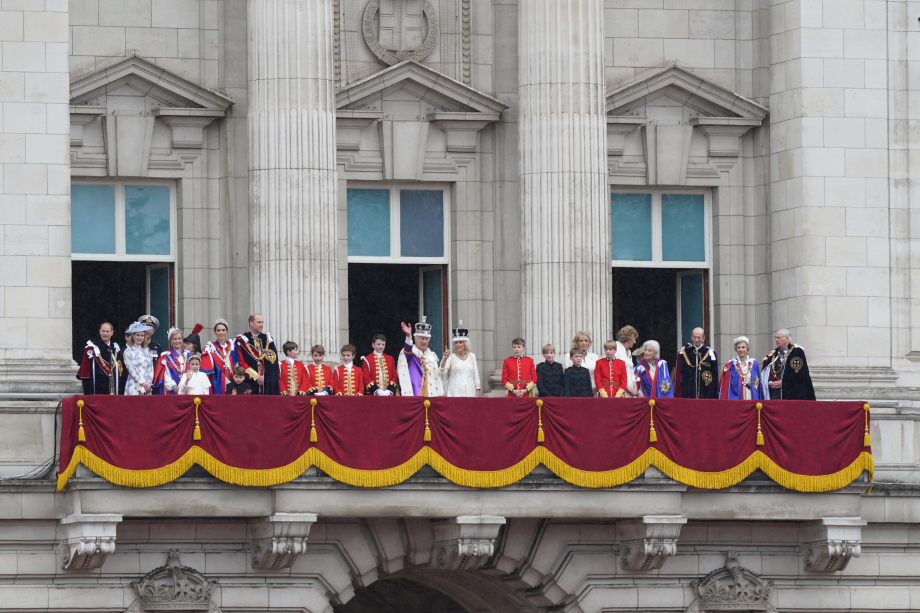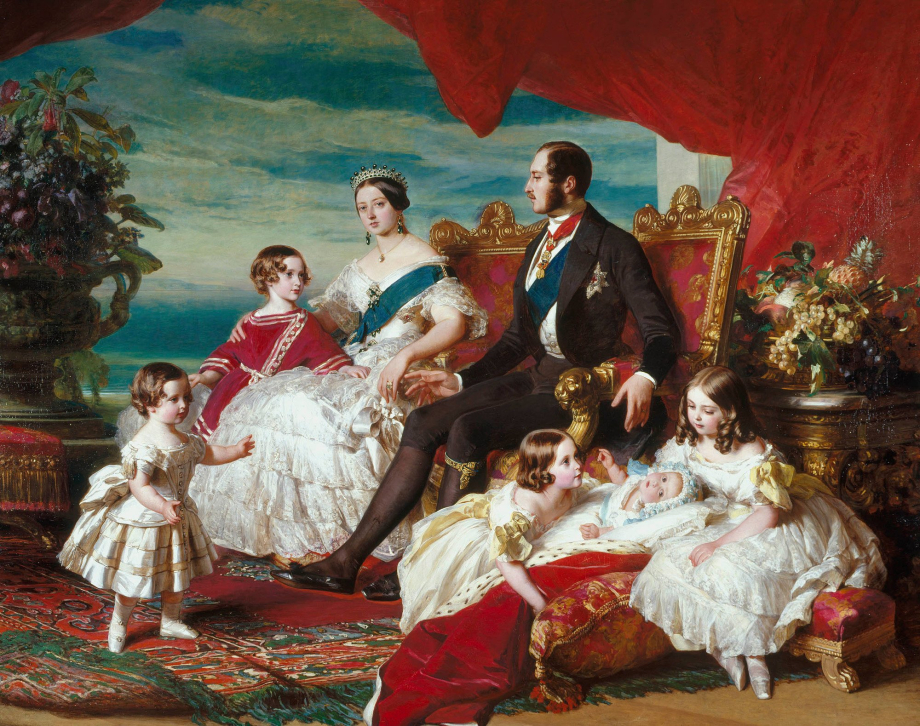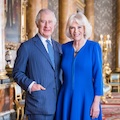Buckingham Palace today
Today, Buckingham Palace is very much a working building and the centrepiece of the UK’s constitutional monarchy, serving as the venue for many royal events and ceremonies from entertaining foreign Heads of States to celebrating achievement at Investitures and receptions.
More than 50,000 people visit the Palace each year as guests to State Banquets, lunches, dinners, receptions and Garden Parties. His Majesty also holds weekly audiences with the Prime Minister and receives newly-appointed foreign Ambassadors at Buckingham Palace.
Receptions are held at the Palace throughout the year to recognise the work of industry, government, charities, sport, the Commonwealth and many more areas of life.
Buckingham Palace is often a focal point for significant national celebrations and commemorations.
In 2002, a music concert was staged in the gardens of Buckingham Palace to mark Queen Elizabeth II’s Golden Jubilee, which included a unforgettable performance of ‘God Save The Queen’ by Brian May from the roof of the Palace and at Her Majesty’s Diamond Jubilee celebrations in 2012 members of the public were invited to have a special picnic in the Buckingham Palace gardens. To mark The Queen's Platinum Jubilee in 2022, there was a special 'Party at the Palace', which included a spectacular drone show.
The balcony of Buckingham Palace is one of the most famous in the world. The first recorded Royal balcony appearance took place in 1851, when Queen Victoria stepped onto it during celebrations for the opening of the Great Exhibition. Since then, Royal Balcony appearances have marked many occasions from VE Day in 1945 to Jubilees, Trooping the Colour and an extraordinary Fly-Past by 100 aeroplanes to mark the RAF's centenary in 2018.

Whilst Buckingham Palace is seen as the administrative hub of the Monarchy, it is also very much a family home, in addition to holding The Queen's Gallery and the Royal Mews. Queen Elizabeth II gave birth to Prince Charles and Prince Andrew at the Palace, and to this day notice of royal births and deaths are still attached to the front railings for members of the public to read. The christenings of The King, The Princess Royal, The Duke of York and The Prince of Wales took place in the Music Room and many Royal Weddings have been celebrated at Buckingham Palace, most recently The Prince and Princess of Wales’s.
The offices of those who support the day-to-day activities and duties of The King and Queen and their immediate family, such as the Private Secretary’s Office and the Privy Purse and Treasurer’s Office are located at Buckingham Palace.
The site where Buckingham Palace now stands was originally a mulberry garden planted by King James I (r. 1603-25) to rear silkworms. Unfortunately, he chose the wrong kind of mulberry bush, and silk production never took off in Britain
History of Buckingham Palace
George III bought Buckingham House in 1761 for his wife Queen Charlotte to use as a comfortable family home close to St James's Palace, where many court functions were held. Buckingham House became known as the Queen's House, and 14 of George III's 15 children were born there.

Queen Charlotte with her Two Eldest Sons
View on the Royal Collection websiteGeorge IV, on his accession in 1820, decided to reconstruct the house into a pied-à-terre, using it for the same purpose as his father George III.
As work progressed, and as late as the end of 1826, The King had a change of heart. With the assistance of his architect, John Nash, he set about transforming the house into a palace. Parliament agreed to a budget of £150,000, but the King pressed for £450,000 as a more realistic figure.Nash retained the main block but doubled its size by adding a new suite of rooms on the garden side facing west. Faced with mellow Bath stone, the external style reflected the French neo-classical influence favoured by George IV.
The remodelled rooms are the State and semi-State Rooms, which remain virtually unchanged since Nash's time.
Virtual tours are temporarily unavailable.
The north and south wings of Buckingham House were demolished and rebuilt on a larger scale with a triumphal arch - the Marble Arch - as the centrepiece of an enlarged courtyard, to commemorate the British victories at Trafalgar and Waterloo.
By 1829 the costs had escalated to nearly half a million pounds. Nash's extravagance cost him his job, and on the death of George IV in 1830, his younger brother William IV took on Edward Blore to finish the work. The King never moved into the Palace. Indeed, when the Houses of Parliament were destroyed by fire in 1834, the King offered the Palace as a new home for Parliament, but the offer was declined.
Queen Victoria was the first sovereign to take up residence in July 1837 and in June 1838 she was the first British sovereign to leave from Buckingham Palace for a Coronation. Her marriage to Prince Albert in 1840 soon showed up the Palace's shortcomings.

A serious problem for the newly married couple was the absence of any nurseries and too few bedrooms for visitors. The only solution was to move the Marble Arch - it now stands at the north-east corner of Hyde Park - and build a fourth wing, thereby creating a quadrangle. The cost of the new wing was largely covered by the sale of George IV's Royal Pavilion at Brighton.

Buckingham Palace front in 1873
View on the Royal Collection websiteBlore added an attic floor to the main block of the Palace and decorated it externally with marble friezes originally intended for Nash's Marble Arch. The work was completed in 1847.By the turn of the century the soft French stone used in Blore's East Front was showing signs of deterioration, largely due to London's notorious soot, and required replacing.
In 1913, the decision was taken to reface the façade. Sir Aston Webb, with a number of large public buildings to his credit, was commissioned to create a new design. Webb chose Portland Stone, which took 12 months to prepare before building work could begin. When work did start it took 13 weeks to complete the refacing, a process that included removing the old stonework.
The present forecourt of the Palace, where Changing the Guard takes place, was formed in 1911, as part of the Victoria Memorial scheme.

The gates and railings were also completed in 1911; the North-Centre Gate is now the everyday entrance to the Palace, whilst the Central Gate is used for State occasions and the departure of the guard after Changing the Guard. The work was completed just before the outbreak of the First World War in 1914.
Visiting Buckingham Palace
Buckingham Palace is open to the public during the summer months and for a limited number of tours in December, January and at Easter each year. Find out more about visiting the Palace on the Royal Collection Trust website.



